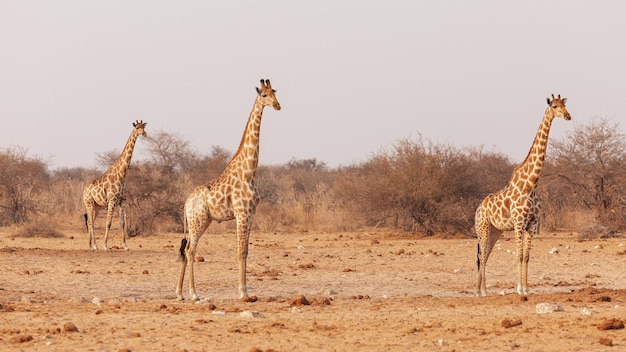
Are you thinking about the top spots to visit in Namibia and what to do while you’re there? Let’s explore some must-see destinations and activities that should be on your Namibia itinerary.
Namibia is famous for its wild beauty and ancient deserts, but there’s so much more to discover. From iconic salt pans and exotic wildlife to one of the world’s largest canyons and charming colonial towns with rich German architecture, Namibia offers a diverse and stunning landscape for any traveler.
First on the list is Etosha National Park, established in 1907. This park provides an incredible safari experience with a wide variety of wildlife and different safari lodges. Covering an area of 22,270 square kilometers, Etosha is characterized by distinct landscapes, including dolomite hills, savanna woodlands, and grasslands. The standout feature, though, is the large salt pan that makes this park unique. Home to hundreds of species of mammals, birds, and reptiles, you have a chance to see endangered species like the black rhinoceros, alongside elephants, lions, leopards, hyenas, zebras, giraffes, wildebeest, and impalas.
Next, we have the Fish River Canyon, the largest canyon in Africa and one of the world’s biggest. Located in southern Namibia, this massive ravine stretches about 160 kilometers in length, up to 27 kilometers in width, and plunges about 550 meters at its deepest points. The Fish River, Namibia’s longest interior river, carves through this breathtaking landscape. For hiking enthusiasts, the 85-kilometer Fish River Canyon Trail is a must-do—typically taking 4-5 days to complete. You can choose to hike it alone or with a guided tour, but bear in mind that the trail is demanding and requires good physical fitness. Since there are no facilities along the trail, you’ll need to carry your food, medical supplies, and necessary equipment, as well as water purification tablets. The trail is open from May to mid-September, offering some of the most spectacular views you’ll find in Namibia.
The Namib-Naukluft National Park in western Namibia is known for its surreal landscapes and rust-red dunes. Part of this park includes the Namib Desert, a coastal desert stretching over 2,000 kilometers along the coasts of Angola, Namibia, and South Africa. The Namib Desert is considered the oldest desert in the world, with a history dating back at least 55 million years. One of its highlights is Sossusvlei, a salt pan surrounded by towering sand dunes that can reach over 325 meters. Nearby Deadvlei, a white clay pan, is famous for its eerie, dead camel thorn trees standing stark against the white ground. Another point of interest within the park is Sesriem, a small canyon carved by the Tsauchab River. Despite the area’s arid conditions, you’ll find a surprising variety of wildlife, including snakes, geckos, hyenas, leopards, African wildcats, foxes, baboons, caracals, bat-eared foxes, and jackals.
Then there’s Spitzkoppe, a striking group of granite peaks that rise dramatically from the flat plains. Known as the “Matterhorn of Namibia,” these peaks are composed of granite over 120 million years old, with the highest peak reaching about 670 meters above the desert floor. The area also features the Pontok Mountains and the Rock Arch, making it one of Namibia’s most photogenic and visited sites.
If you’re exploring Namibia’s coast, don’t miss Swakopmund. This coastal city, the fourth-largest in the country, offers a charming colonial ambiance with its remarkable German colonial architecture, as it was originally established as the main harbor for German South-West Africa. Swakopmund is also a notable beach resort, offering several beachfront hotels where you can relax, even if it’s not quite as luxurious as the Maldives or Seychelles.
Lastly, Cape Cross, a small headland on Namibia’s Skeleton Coast, is famous for the Cape Cross Seal Reserve. Established in 1968 to protect the Cape fur seals, the reserve is home to one of the world’s largest colonies of these seals, with around 100,000 seals inhabiting the area.
These destinations provide just a glimpse of what Namibia has to offer, ensuring a memorable and diverse travel experience.